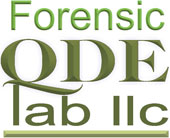Digital Signature Document Examination
In the past, a questioned document examiner analyzed an original inked handwritten signature under the microscope, compared it to similar examples of the known writer and opined as to its authenticity. These days, however, many signatures are not written on paper with a pen. Rather, signatures are signed on different types of touch pads and the speed, pressure and direction of the writing is recorded digitally. Fortunately, the science of questioned document examination has kept up with the times and a handwriting expert can still help.
Today’s questioned document examiners are increasingly called upon to provide analysis of digital signatures. While this is a far cry from looking at an inked original, there are still ways for the questioned document examiner to unravel the digital information stored on the memory of a point-of-sale pad and to verify whether or not the signature is genuine. This kind of digital questioned document examination is becoming more frequent when the authorship of a digital signature is questioned on such transactions as insurance and real estate financing.
Lawyers seeking a questioned document examiner should ask about the examiner’s experience with examining digital signatures. Today’s forensic document examiners are expected to be knowledgeable about digital signatures. The actual process of questioned document examination isn’t much different for digital documents and signatures than it is for traditional pen and paper signatures. The significant difference is that the forensic document examiner has to retrieve the signature from embedded code (otherwise it generally looks like random or low-resolution pixels). Once the signature is retrieved, questioned document examiners use the same techniques they use for examining photocopied documents.
When you need handwriting analysis in San Diego, be it traditional handwriting or digital signatures, reach out to Forensic QDE Lab at Linda@ForensicDocExaminer.com.
